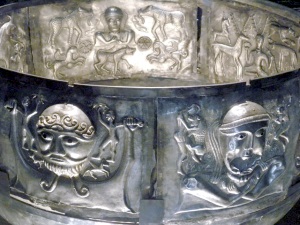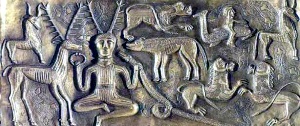
Celtic Mythology is a foundation stone supporting, along with the language, music and dance, our collective Celtic identity. Celtic Mythology is rooted in the Oral traditions of the six Celtic nations and in surviving manuscripts. Too few texts have survived the savagery and wanton destruction directed at the Celts over the centuries during the emergence of the modern nation states of England and France. The surviving written Celtic source documents are due to accidents of history and geography, mainly Irish and Welsh in origin. The Folkloric traditions of the Six Nations often amplify and sometimes deviate from the written record and provide an important source of our knowledge of the Celtic pantheon. This article is the first part of our survey of the Gods and Goddesses of the Celtic Pantheon.
Tuatha Dé Danann

The Tuatha Dé Danann form a significant feature in Irish, Scottish and Manx mythology. They are Celtic pre-Christian gods with supernatural ability and were of great importance to Gaelic people. They belong to the Otherworld (Aos Si) community whose world was reached through mists, hills, lakes, ponds, wetland areas, caves, ancient burial sites, cairns and mounds. Their association with ancient Neolithic and Bronze Age burial mounds is probably linked to the importance these sites had for the people of pre-history. They were places of communal interment for the ancestors of the Celts of northwest Europe who are descended from the native Neolithic peoples of these lands. Their story was passed on for many centuries in oral tradition. Many of these legends were recorded in a collection of poems and texts, some dating from the third century AD, and compiled in the eleventh century by Christian scholars in such works as the Leabhar Gabhála Éireann known in English as The Book of Invasions.